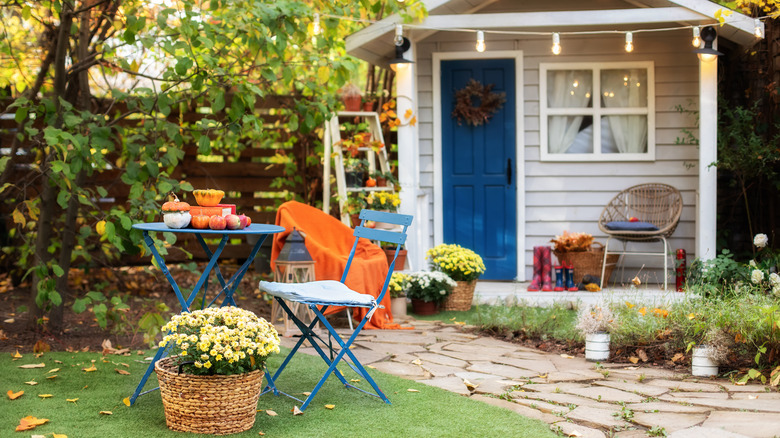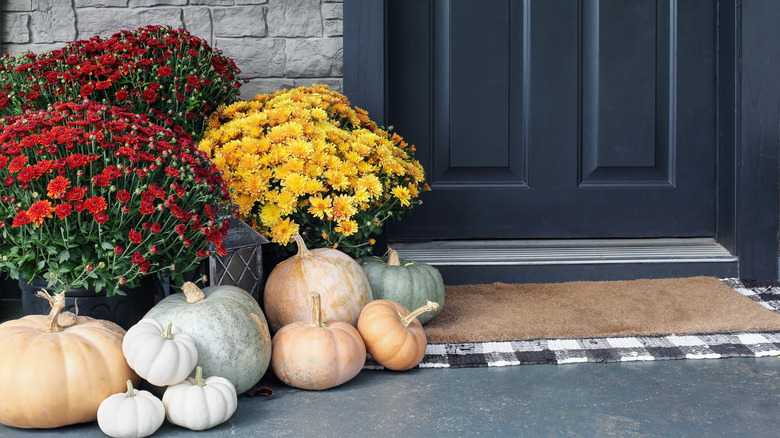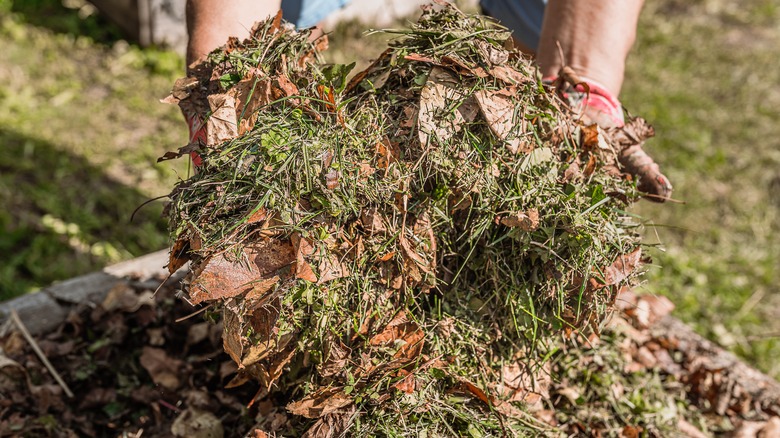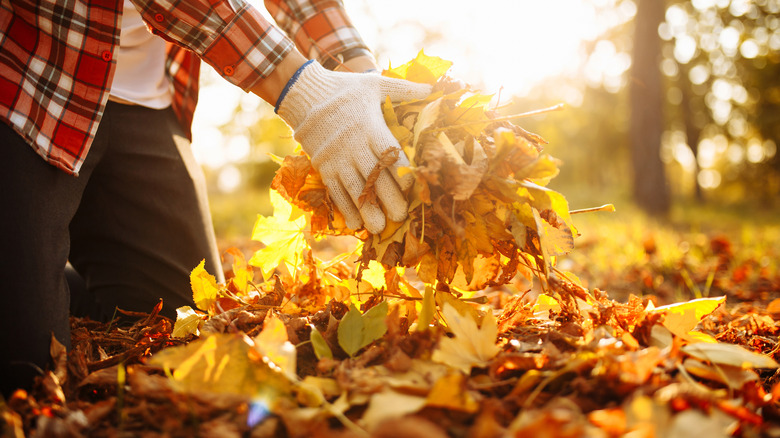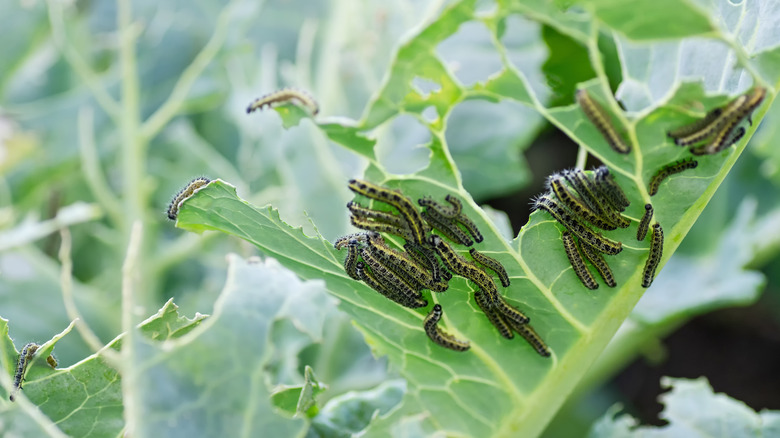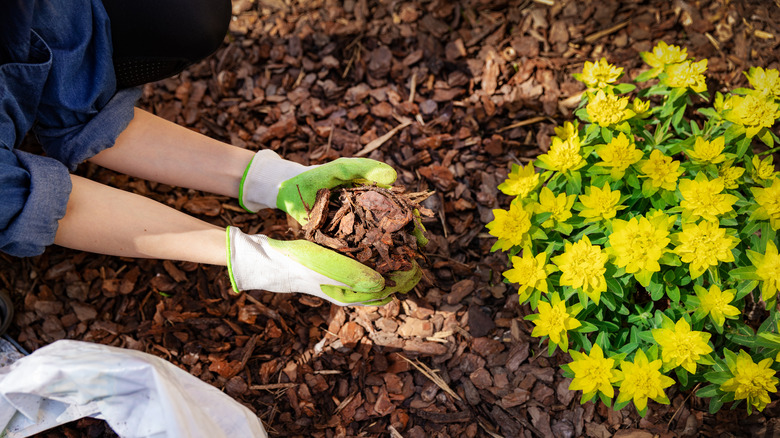5 Tips For Making The Most Of Your Autumn Garden
The garden during the autumn season is too often ignored. When the holidays are approaching, our priorities outdoors naturally shift to decorating for Halloween, harvesting pumpkins for carving, or spending time with family before the evenings get too cold to enjoy. While none of these things should be pushed to the side, you might consider allocating time in your busy schedule to getting as much beauty out of your fall garden as possible before winter hits.
September, October, and early November are important months for your home garden, and there are plenty of great fall plants that will bring color and a healthy look to your lawn throughout the season. In fact, Penn State Extension suggests a wide range of gorgeous late bloomers including perennials that will blossom every autumn.
As the season moves on, annuals will be showing off their last flowers, leaves will start shifting in color and falling from the trees, and soon native insects and wildlife will begin preparing for the winter. Landscapes during this period of intense change can develop problems if left unchecked, but your garden doesn't need to be overtaken by dead leaves and bare branches. Properly caring for your garden in autumn won't just mean that it continues to look nice. It will also be better protected in the winter and explode again with color in the spring due to your diligent work during this season.
Create a color palette
Before the leaves begin falling from trees, you should have an idea of what you want your autumn garden to look like. Even though spring and summer flower gardens normally steal the show, a fall garden can be just as enticing and functional when you know what to plant and how to care for it. Cole Landscaping insists that you plant shades of orange, yellow, red, green, purple, and dark pink for a cohesive autumn vibe, and who can blame them? Fall blooming flowers such as marigolds, sunflowers, hydrangeas, asters, mums, and red salvia, as well as some cold hardy foliage-filled plants like ornamental kale, will provide all the color you need. The best part about growing these fall plants is that they can be planted early in the growing season for bold color at the beginning of spring and summer too.
Of course, you don't have to stick to the traditional harvest color palette if it's not your thing. As mentioned by Monrovia, a sleeker theme can be achieved with other fall favorites too. You may try out a lush green garden filled with variegated foliage, or something more eye-catching with dark purple-hued leaves and petals. Some dark, moody options include black mondo grass, fountain sedum, and purple pansies.
Compost frost-tender plants
When you first begin learning about how to care for a fall garden, one of the most commonly recommended procedures is composting. Fall is the perfect time to begin a compost pile because most plants around your yard are slowly shedding their leaves or dying. All of this decomposing plant material makes for wonderful, carbon-rich compost. Eartheasy recommends gardeners gather as many dry brown leaves as possible when starting their pile. Ideally, you'll want about a third of your mixture to come from green plant material rich in nitrogen and the rest to be made up of brown plant material rich in carbon. This ratio makes for a quick, fluffy, and odorless compost pile.
As per the University of Georgia Extension, your finished compost can provide you with a few different uses. Most often, compost is used to amend and condition soil due to its nutrient-rich nature, but it may also be used for mulching, weed control, and combating soil erosion. The process of creating and applying compost also helps keep your lawn free of debris. It allows you to survey your annual and perennial plants, and it ensures that your garden will make it through the winter with plenty of protection and nutrients.
Keep up with falling leaves
If you decide to compost your leaves and other plant debris, cleaning up the dead materials in your lawn will become a quick and easy daily task. However, even if you decide not to compost, you still need to keep up with the fallen leaves on your property if you want to show off a lush and blooming garden come springtime. Some decaying leaves in your lawn can be very beneficial, but a thick mat of dead plant material must be broken up so your grass can survive. When you leave too many fallen leaves in your yard to decompose on their own, you're setting your garden up for failure. A blanket of brown plant material left covering grass and low-growing plants can cause problems because they block out light and smother your plants, warns Iowa State University.
Of course, you don't need to rake up each and every leaf; the National Wildlife Federation offers options for dealing with fallen leaves. In addition to composting, you may decide to create a local insect sanctuary, use dry leaves for mulching, or drop them off at your nearest recycling center. You should refrain from gathering your leaves in plastic trash bags to be dropped off in a landfill. Decomposing leaves create methane as they break down which contributes to greenhouse gasses harming our atmosphere. Dealing with your leaves in your own yard can help you save the health of your garden and that of the planet.
Protect your plants from pests
Before the first frost hits, insects that enjoy munching on fall vegetables and thick plant leaves are seemingly eating as much as they can. When you've been growing your favorite varieties of squash, tomatoes, and herbs all season, seeing them ruined by pests is an awful sight. NC Cooperative Extension advises vegetable growers to watch out for insects such as flea beetles, caterpillars, slugs, harlequin bugs, stink bugs, and more. Each of these pests mate and reproduce in the warm months just before autumn begins, creating an army of plant-eaters as we approach harvest season.
To keep insects like these away from your crops and other leafy plants, you can try a few different methods, says High Mowing Organic Seeds. The first step to decrease the number of pests in your garden is to clear away fallen leaves and other plant debris where insects mate and seek shelter. After cleaning, your options include spraying plants with neem oil or insecticidal soap, setting traps, removing larger pests by hand, and introducing beneficial insects like ladybugs into your garden.
Protect perennials from frost
As the colder months of autumn approach your area, it's best to protect the perennial plants that aren't expected to survive well in snow and frost. Sometimes this protection process is as easy as bringing your potted favorites indoors, although Pennington reminds us that moving your plants into the house takes time. You must properly prepare your space and acclimate your outdoor plants to the indoors to ensure their survival. You may also need to cover your garden bed with sheets of burlap to keep falling snow off of tender plant leaves.
As for the plants that are growing in the ground or are too big to bring inside, Proven Winners advises gardeners to mulch their perennials before the first frost. Mulching with compost, bark, leaves, or straw will keep the soil covering your plant's roots at a consistent temperature that allows the plant to stay dormant throughout the winter without being damaged by hard frost and snow.
